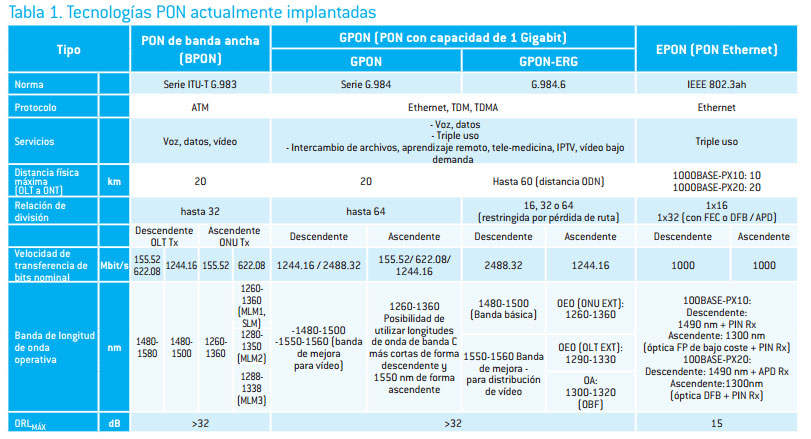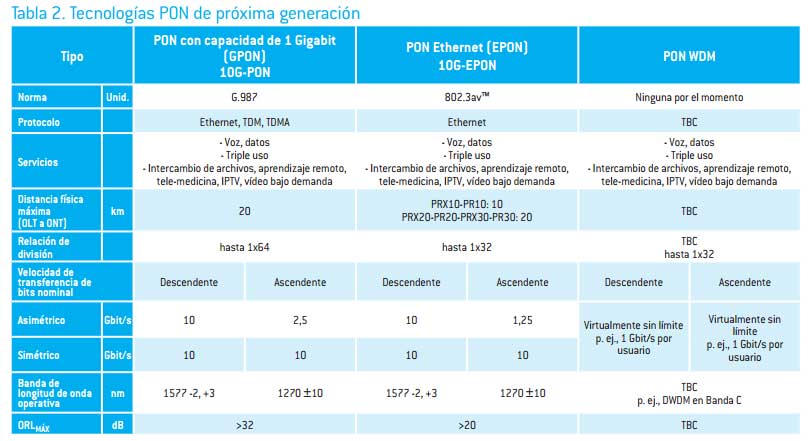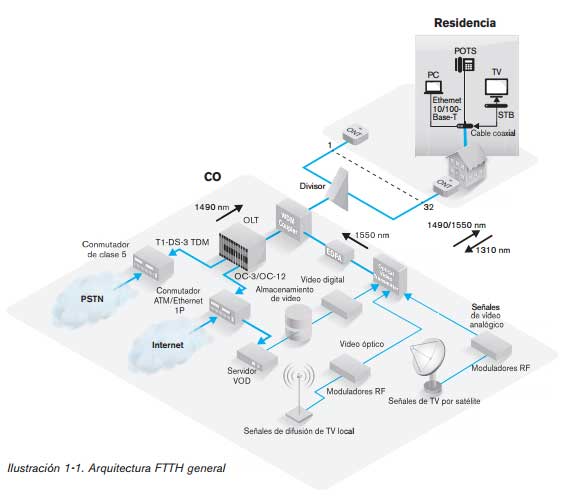FTTx Technology
New standards such as those established by ITU-T, the IEC and the Institute of Electrical and Electronics Engineering (IEEE),
have greatly increased standardization of design, survivability and safety of PONs.

It offers the opportunity to economies scale and lower costs, no conceivable above. Tables 1 and 2 describe the
main parameters that define these standards.

1.1 Architectures FTTH
The Figure 1-1 shows the overall architecture of a typical FTTH network. The CO (also called the header), the public switched telephone network (PSTN) and Internet services are interconnected with optical distribution network (ODN) by optical line terminal (OLT). Wave lengths descending and ascending 1490 nm 1310 nm are used for transmitting data and voice. RF analog services become video format optical wavelength 1550 nm by the optical video transmitter. Wavelengths of 1550 nm and 1490 nm are combined by the WDM coupler and transmitted together in descending order. IPTV is now transmitted over 1490 nm.

In summary, the three wavelengths (1310, 1490 and 1550 nm) and different information simultaneously transported in various directions over the same fiber. F1 input cable carrying optical signals between the CO and the divider, which allows multiple ONTs to the same input fiber. An ONT is required for each subscriber and provides connections for different services (voice, data and video). Since an OLT serves up a total of 32 participants (more than 64 GPON), usually many OLTs leaving the same CO to serve a community need. There are different architectures to connect subscribers to the PON. The simplest uses a single divider (see Figure 1-2), but multiple dividers can also be used (see Figure 1-3).
1.2 Equipment passive optical distribution network
equipment passive optical distribution network (ODN) is a computer and components located between the OLT (active) and the customer premises (the ONT; active); this includes both optical and non-optical network components. The optical components forming the optical distribution network (ODN) and include splices (fusion and mechanical), connectors, splitters, couplers, WDM, optical fiber cables, cords connecting terminals and possibly fall with drop lines. The non-optical components include pedestals, cabinets, patch panels, junction boxes and miscellaneous hardware (see Figure 1-4).
Source: EXFO.